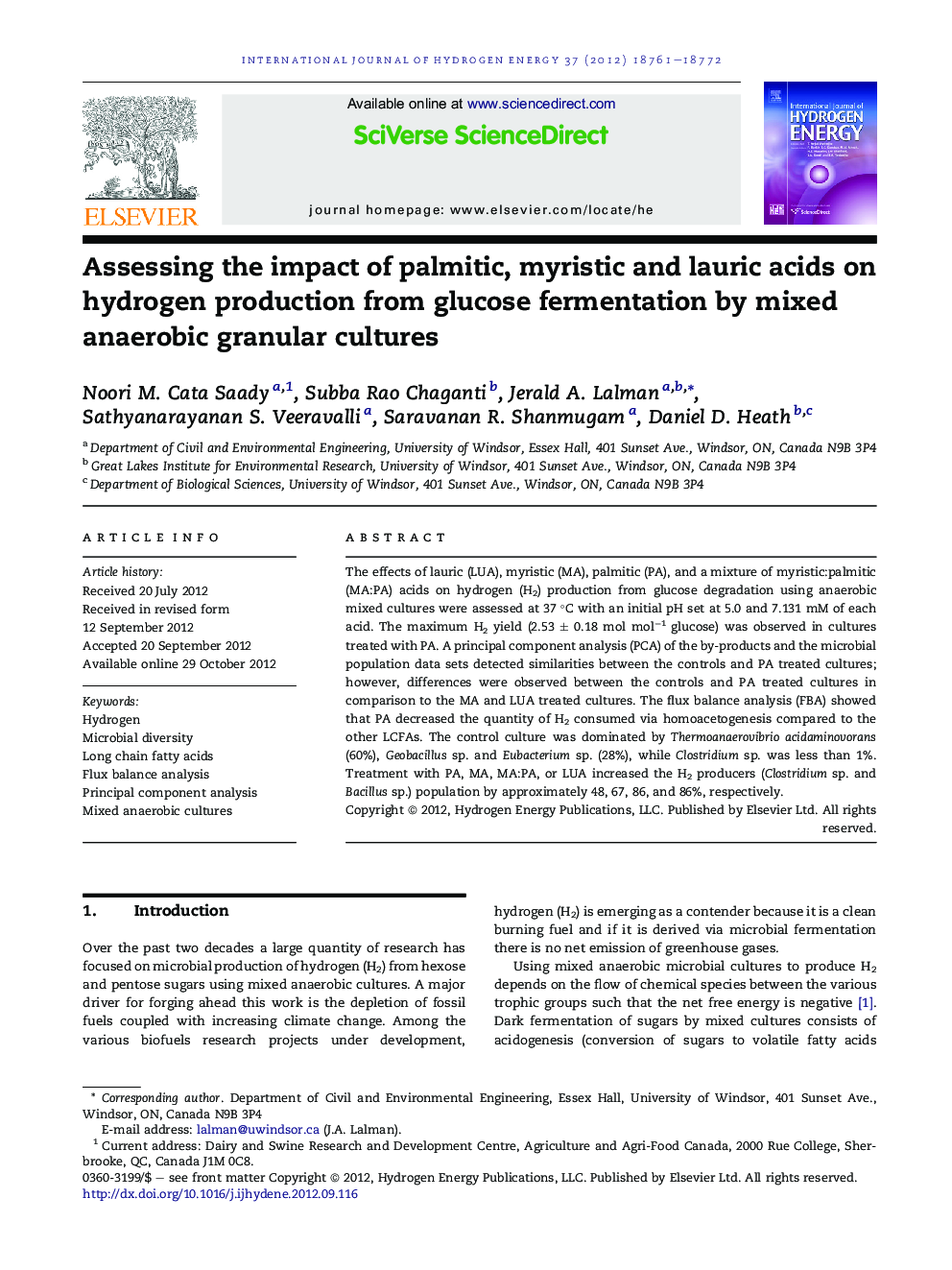| Article ID | Journal | Published Year | Pages | File Type |
|---|---|---|---|---|
| 1276081 | International Journal of Hydrogen Energy | 2012 | 12 Pages |
The effects of lauric (LUA), myristic (MA), palmitic (PA), and a mixture of myristic:palmitic (MA:PA) acids on hydrogen (H2) production from glucose degradation using anaerobic mixed cultures were assessed at 37 °C with an initial pH set at 5.0 and 7.131 mM of each acid. The maximum H2 yield (2.53 ± 0.18 mol mol−1 glucose) was observed in cultures treated with PA. A principal component analysis (PCA) of the by-products and the microbial population data sets detected similarities between the controls and PA treated cultures; however, differences were observed between the controls and PA treated cultures in comparison to the MA and LUA treated cultures. The flux balance analysis (FBA) showed that PA decreased the quantity of H2 consumed via homoacetogenesis compared to the other LCFAs. The control culture was dominated by Thermoanaerovibrio acidaminovorans (60%), Geobacillus sp. and Eubacterium sp. (28%), while Clostridium sp. was less than 1%. Treatment with PA, MA, MA:PA, or LUA increased the H2 producers (Clostridium sp. and Bacillus sp.) population by approximately 48, 67, 86, and 86%, respectively.
Graphical abstractFigure optionsDownload full-size imageDownload as PowerPoint slideHighlights► Hydrogen production was observed in long chain fatty acids (LCFAs) inhibited granular cultures. ► PA enhanced the H2 yield with a maximum reaching 2.53 ± 0.18 mol mol−1 glucose. ► PA was the least harmful to acidogenic H2-producers. ► A larger bacterial diversity was observed with PA treatment. ► Treatment with LCFAs increased the Clostridium plus Bacillus sp. populations.
